The following information is a result of a collaboration of several members who shared their tips, hints and ideas based on their personal experiences. Please understand in most instances there isn't one correct answer, but several good recommendations and all of them are right. Keep in mind they are suggestions and are meant to be helpful. You can certainly disagree or have other opinions.
Salt in My Shakers?
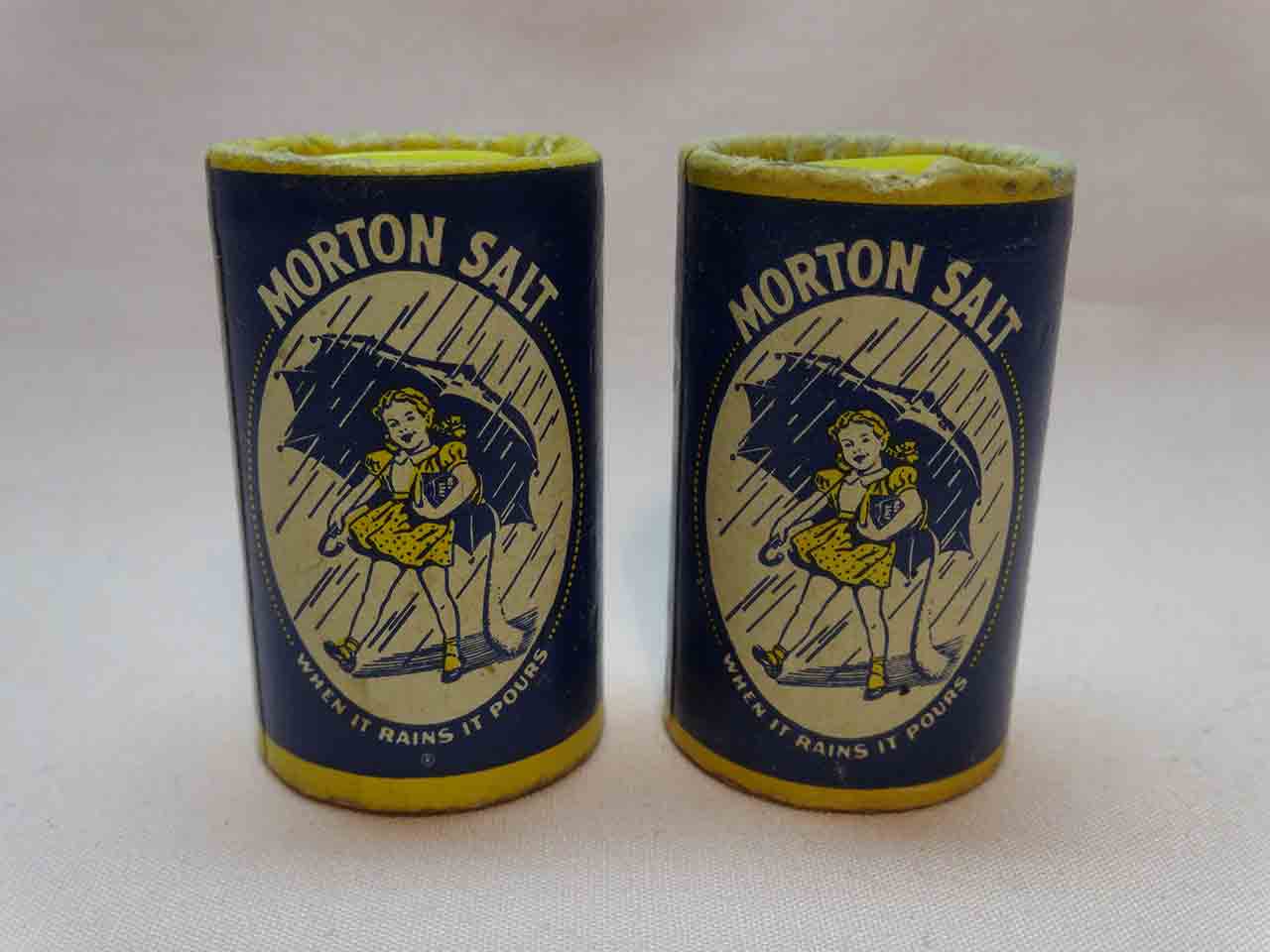
Oh, NO! Do NOT put salt in your shakers unless you plan to use them as tableware. Salt is hygroscopic, meaning it absorbs water from the air. It will cake and become corrosive. Over time it will destroy your beautiful, collectible shakers.
How to Clean Shakers
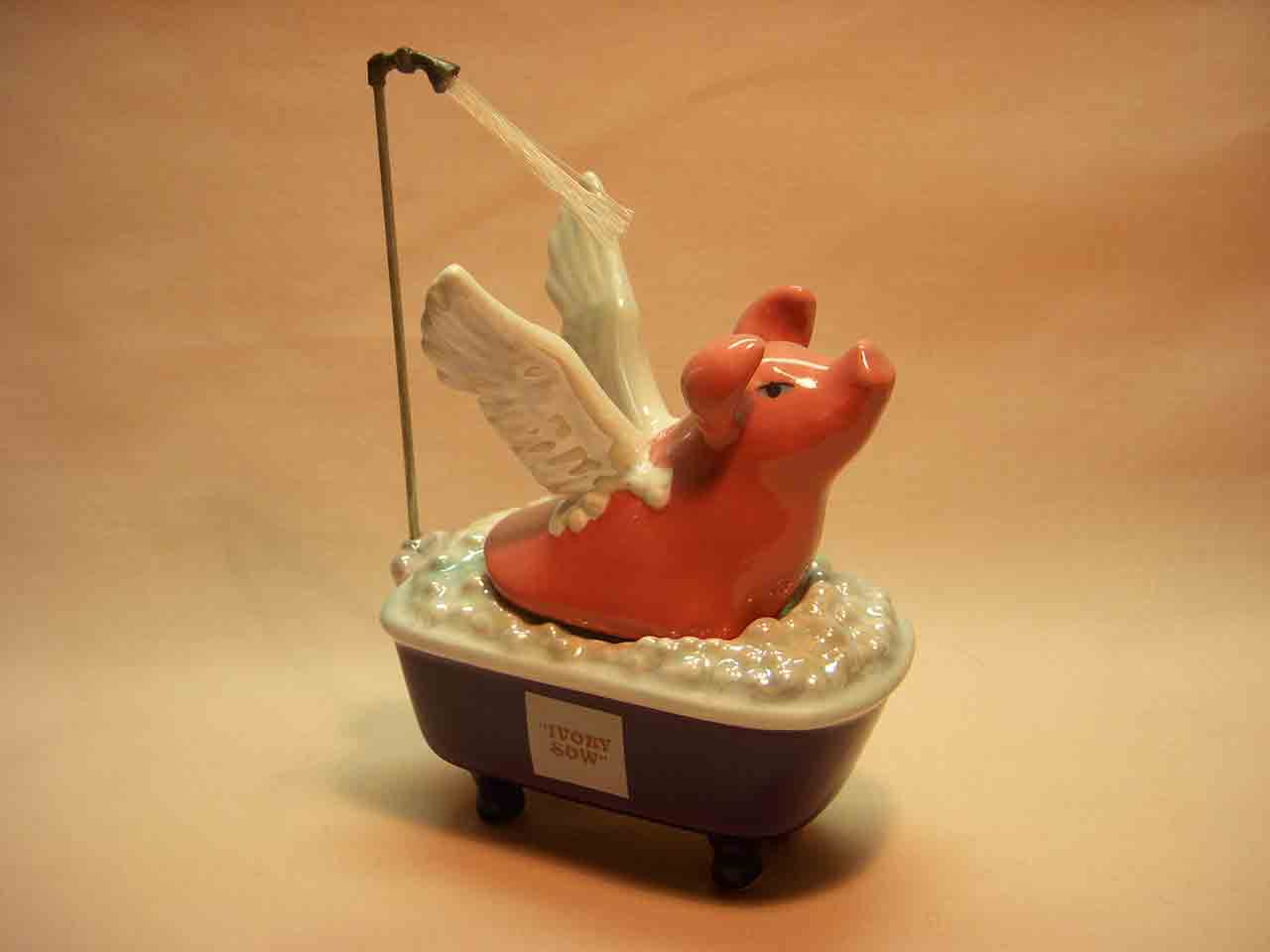
It sometimes feels that salt & pepper shakers are little dust magnets and they like to attract grease and grime in the hard to reach areas. Merchants use price stickers with hard to remove adhesive and sometimes tape pieces together so well it’s almost impossible to remove the tape residue that builds up over time.
Members volunteered several ideas they find helpful to clean their shakers.
- Use a soft, damp cloth. For getting into small places use a damp Q-tip or a bit of paper towel on the end of a toothpick.
- Use a damp paper towel and/or Q-tip. If necessary, use mild dish soap on the towel. Never submerge shakers in water.
- Wipe plastic shakers with a damp cloth.
- If there is residue on the shaker, try using Pam or butter on the spot to get the sticky stuff off. Goo Gone has never worked well for me. For dirt on a glazed shaker try Palmolive and a paper towel. You can also rub lightly with a scrubby sponge, but never do this with cold paint.*
- Duck Adhesive Remover is great product to remove tape and adhesive residue. The top has a plastic scraper that works well with a lot of gentle pushing and patience.
- I clean very gently with a soft cloth, Q-tips or artist paint brush and Windex for most of them. One thing I found that works especially well for getting the sticky stuff off is the elastic banding off an old pair of underwear and a little Goo Gone or sewing oil.
- If it is ceramic glazed, I use 409. I mainly collect minis and have brought dull gold and silver to a sparkling shine with 409. Spray it on, rub it over with your fingers, rinse it off, and let it dry.
- Do NOT use 409 or any other cleaners on shakers that have cold paint* because it will take the paint right off. Dusty ones can be wiped off delicately with a soft cloth.
- Chalkware** needs to be handled very carefully to avoid damage. Try a dry, soft tooth brush. Be very careful. Water can destroy chalkware
- For displayed shakers, unless I can see dust, I leave them alone. The less I handle them, the less likely I will break them.
- The sticky residue from tape and stickers isn't hard to remove. Rubbing alcohol will take it away and it evaporates.
*What is Cold Paint?
Cold paint refers to the finish on the shakers. The item is fired in a kiln then decoratively painted after the firing. The paint is “cold”, not fired on, and tends to flake easily. Usual colors are red, blue and black.
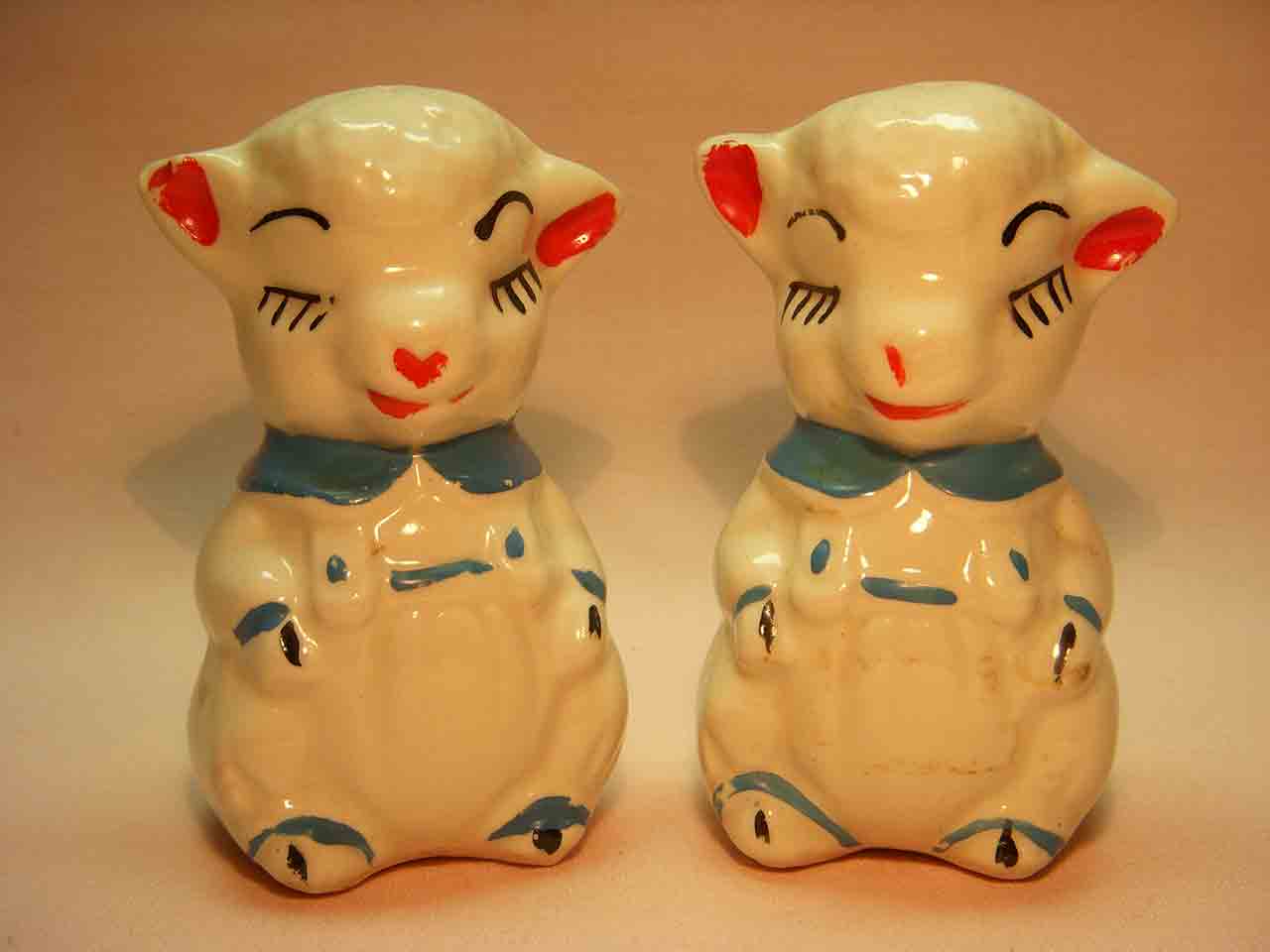
**What is Chalkware?
Chalkware is really plaster of Paris decorated with watercolors or oils. It is very fragile as it chips and cracks easily. Exposure to water will cause it to come apart.
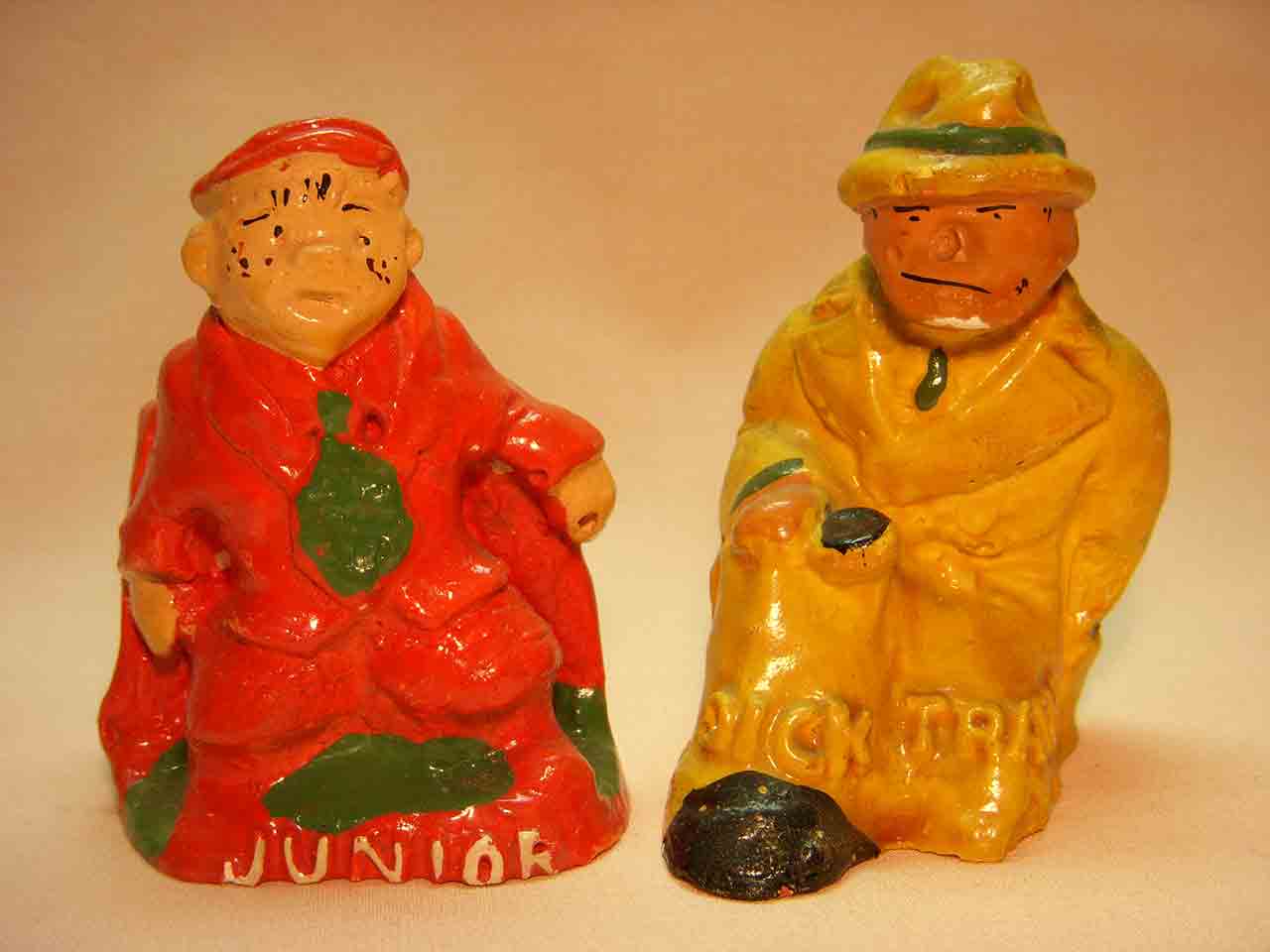
Weather & Shakers
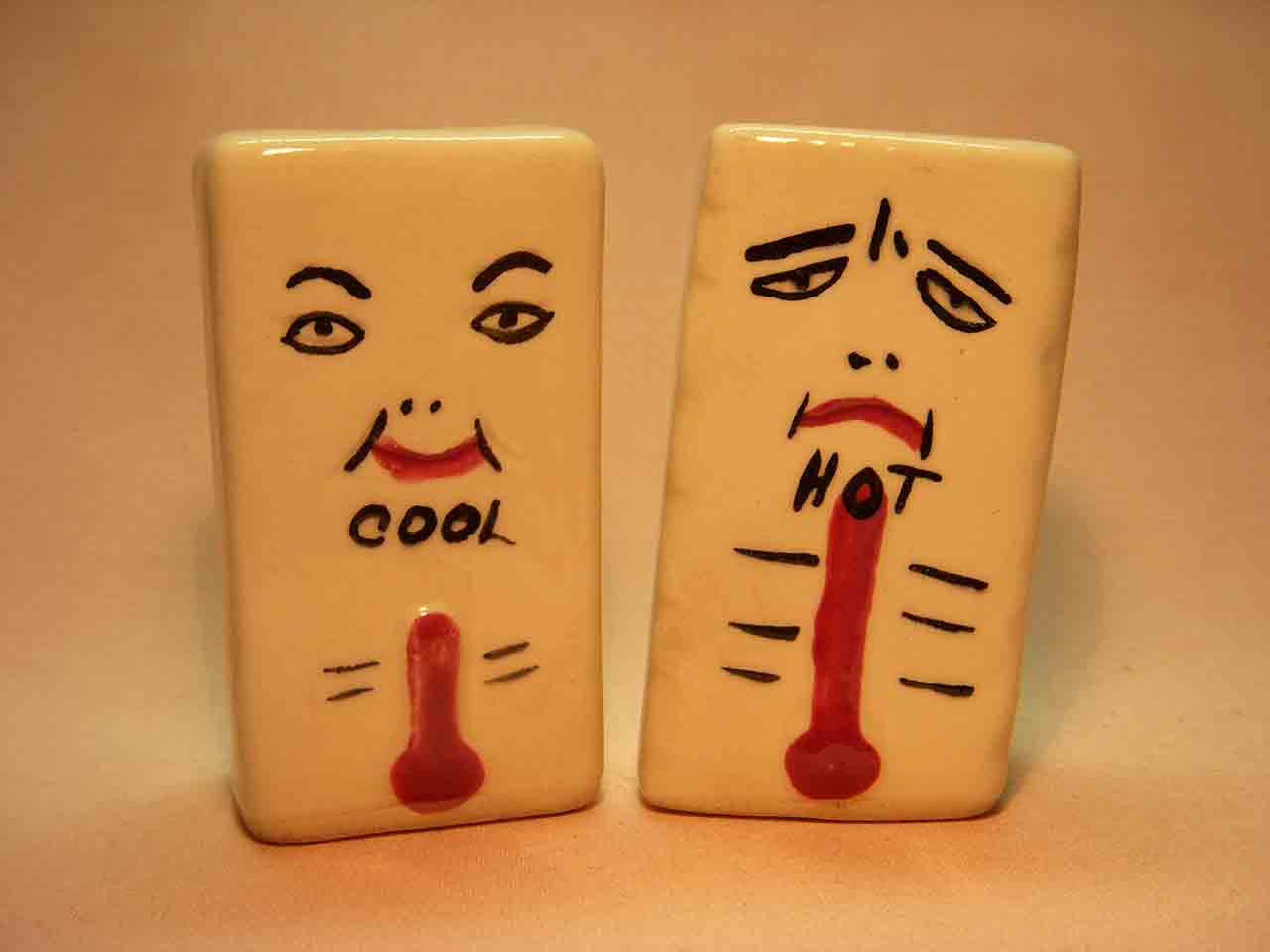
The mailperson just arrived with your box of shakers. You want to rush out, get the box and tear it open to see your new treasures. STOP! Depending on the weather you may need to acclimate your shakers before unpacking.
If you live in a cold climate, don’t open your box and handle your shakers until they come up to room temperature. The warmth of your hands can cause cracks in vintage ceramic items when they are very cold. Also, cold hands in hot climates may crack hot ceramic items.
Sellers’ Suggestion: Apply a sticker to the box and the bubble wrapped shakers warning people to let it set until room temperature.
Rare or Common?
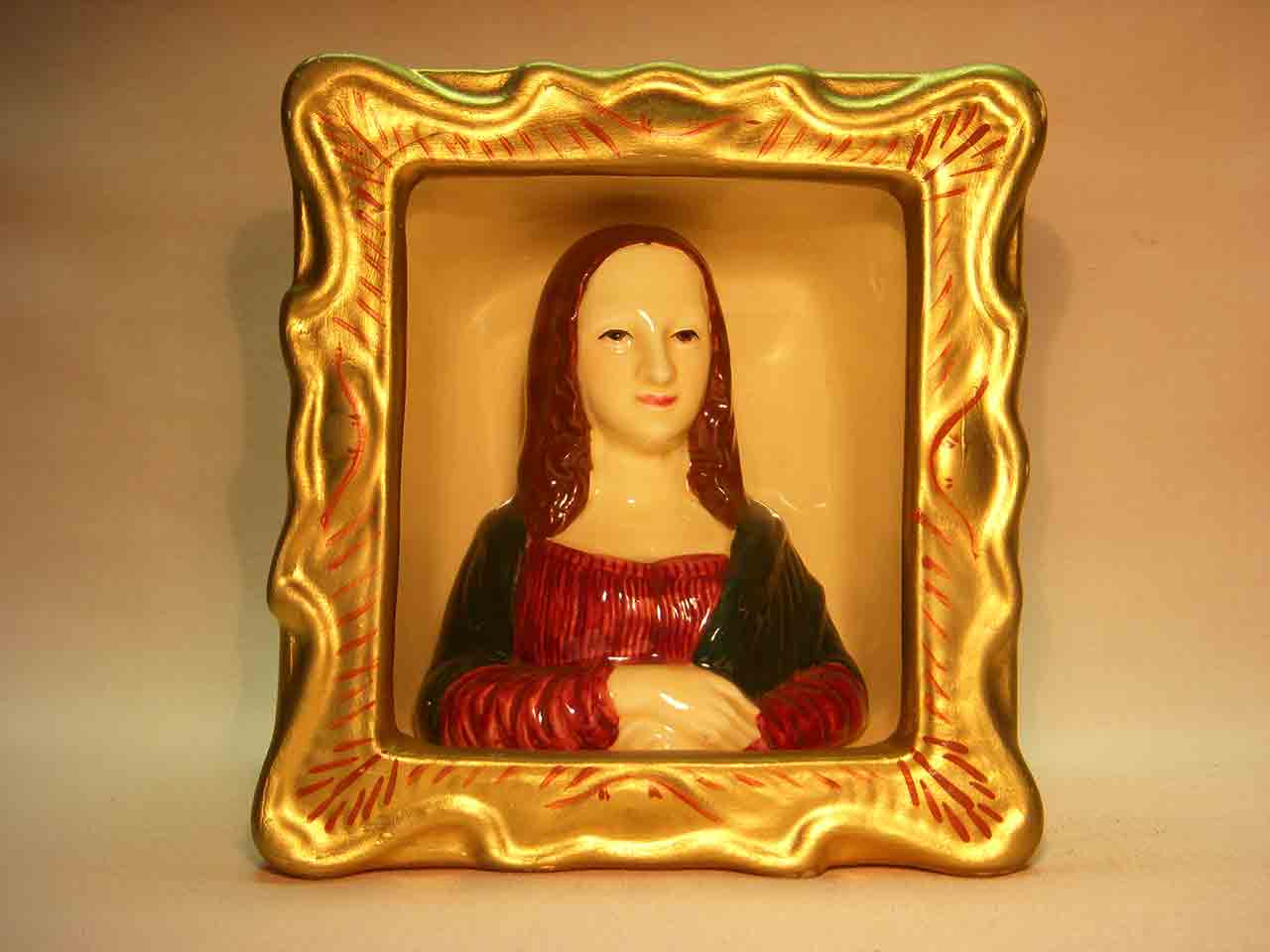
Like all collectibles, shaker values vary. Some can demand high prices while others you can’t give away. Some sets used to command higher prices but now they are out of favor. How can you tell if you have a masterpiece or a common set? How can you find information about a set?
- Check eBay's completed listings. Is it frequently listed? Is it selling? How much has it sold for? Do current eBay listings have a lot of watchers?
- Recent Facebook and Club Convention auctions can help you find out what sets are hard to find and in demand.
- Attend a Local Chapter meeting and ask fellow collectors.
- Going to the Club’s convention is helpful because you see lots (!) of shakers for sale. Over time you will learn to recognize some sets as being more valuable than others. You can see what’s more common, what goes for more $$$ at the auction, etc. Talking with fellow collectors there is very helpful. Everyone is open and friendly.
- Read the Novelty Salt & Pepper Shaker Club's newsletters.
- Post a picture and a question about a set on the Club's private Facebook group.
- Follow Facebook shaker auctions.
- With all of the Facebook groups available now, there are so many places to ask questions about identifying sets.
How Do You Find the Value of a Shaker?
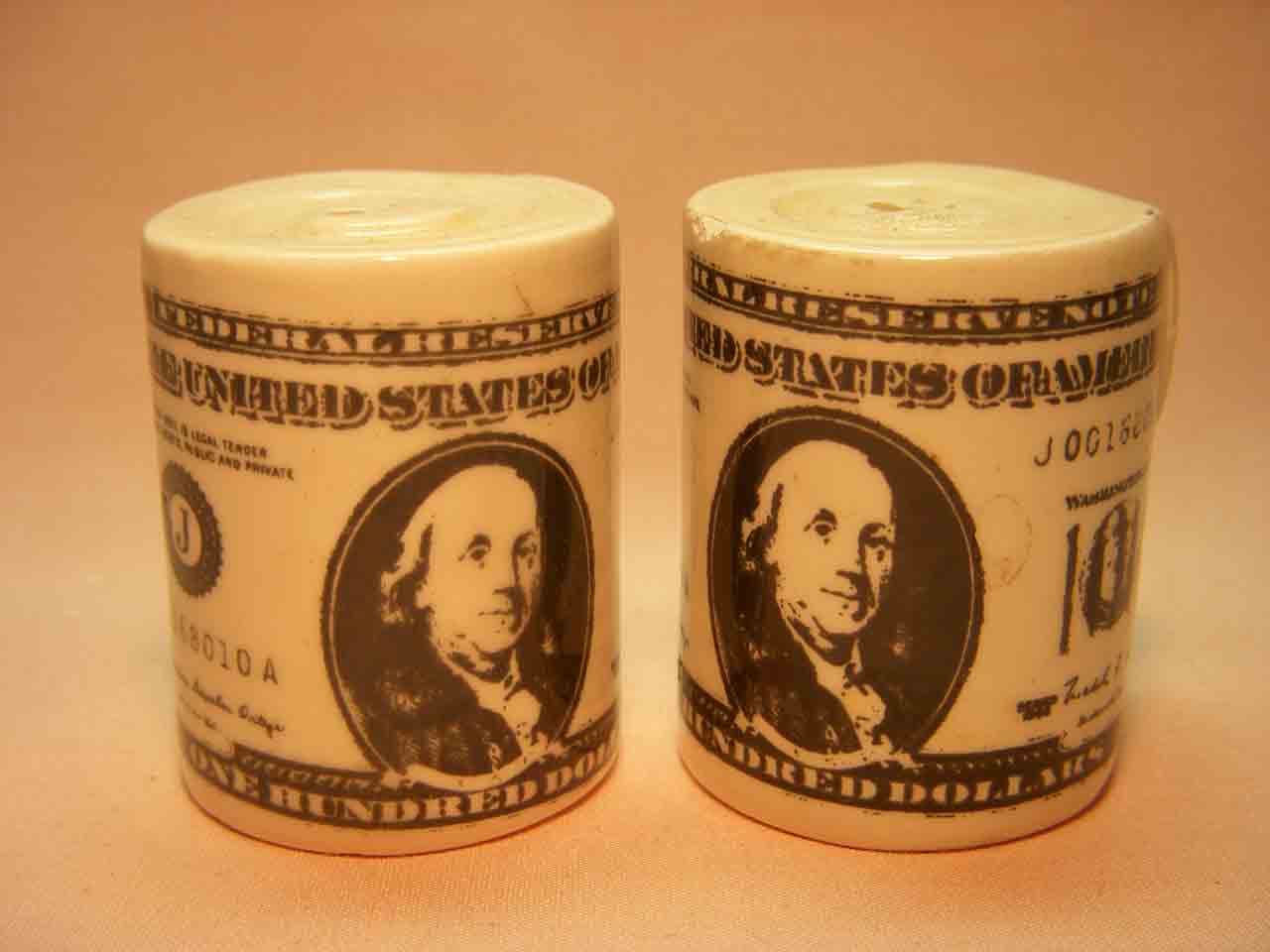
How much is a set worth? How much should you spend? How much should you charge? These are all good questions. The creation of eBay really affected the shaker market. Shaker prices plunged because so many sets became available at any one time. Consequently, the many reference books out there are no longer relevant for pricing.
So how do you determine what a shaker set is worth? Our members had a lot to say on the topic.
- eBay is a good resource tool, but be sure to check the SOLD items, not the listing price. You may want to take an average of all sold prices.
- Use eBay SOLD prices and throw out the high and the low prices and use the middle to value.
- Check eBay SOLD prices and check the completed listings to see how many times the set was listed and never sold.
- The real value of a shaker is what you are willing to pay for it based on how bad you want it.
- Everything depends on condition and rarity.
- If buying on line be sure to add the shipping to the price to determine the real price of the item. Sometimes the shipping costs more than the shaker!
- One member just “goes with my gut” when it comes to setting a price. "Over the years I've gathered enough experience and knowledge that I can wing it."
- Another member, who buys collections and then resells the sets individually, figures out a price per set based on factors related to the cost to buy and sell the collection. They add up the expenses to buy the collection (price of the collection, shipping or the cost of gas, a night in a hotel, etc.) plus add the expenses to ship (bubble wrap, boxes, tape, popcorn, PayPal fees, etc.) then divide by the number of “sell-able” sets to get a per set price. They then add enough to make a profit.
- One member looks at a set and thinks “What am I willing to pay for it?” or "What am I willing to let it go for?”. They buy and price emotionally.
- This member sells at an antique mall. " I use several factors: current selling prices on various websites, what I paid for it, what I would pay for it if I were to buy it again, how common it is, etc. When selling in my booth, I start with a price that I'd like to get for it under ideal circumstances, and go up or down depending on what I see. I had one set for sale for $8 and it sat for months. I went to mark it down, but put the wrong tag on it and actually increased it to $12… it sold the next day!"
- Another member's opinion: "All of the collector books I have are really not much use in pricing shakers as the market has changed. There was a time when some shakers sold for high prices and now you can get very little for them - some just the opposite. Buyers always want low prices and sellers as high as they can get. eBay 'sold items' is a good place to get ideas of what is selling and how much they sell for; however, not a perfect source as sometimes the same identical set one week will sell for $25, the next week the same set has a bidding war and goes much higher - or doesn't sell at all. Auctions are just what they say 'auctions' and it is whatever a buyer is willing to pay. I see many sets people way overpay for, but if they want it and are willing to pay, good for the seller. But it does pay to do your homework and research items. With all of the FB groups available now, there are so many places to ask questions and identify sets".
- And finally, our last member says join the club! "Becoming a member helps with identifications but the annual Convention is where I learned the most about shakers and definitely about pricing. Members are those who have their finger on the pulse of shaker shopping. We learn what they are willing to pay, what they are willing to spend, and what the current popular pieces are."
How to Determine the Price to Sell a Whole Collection
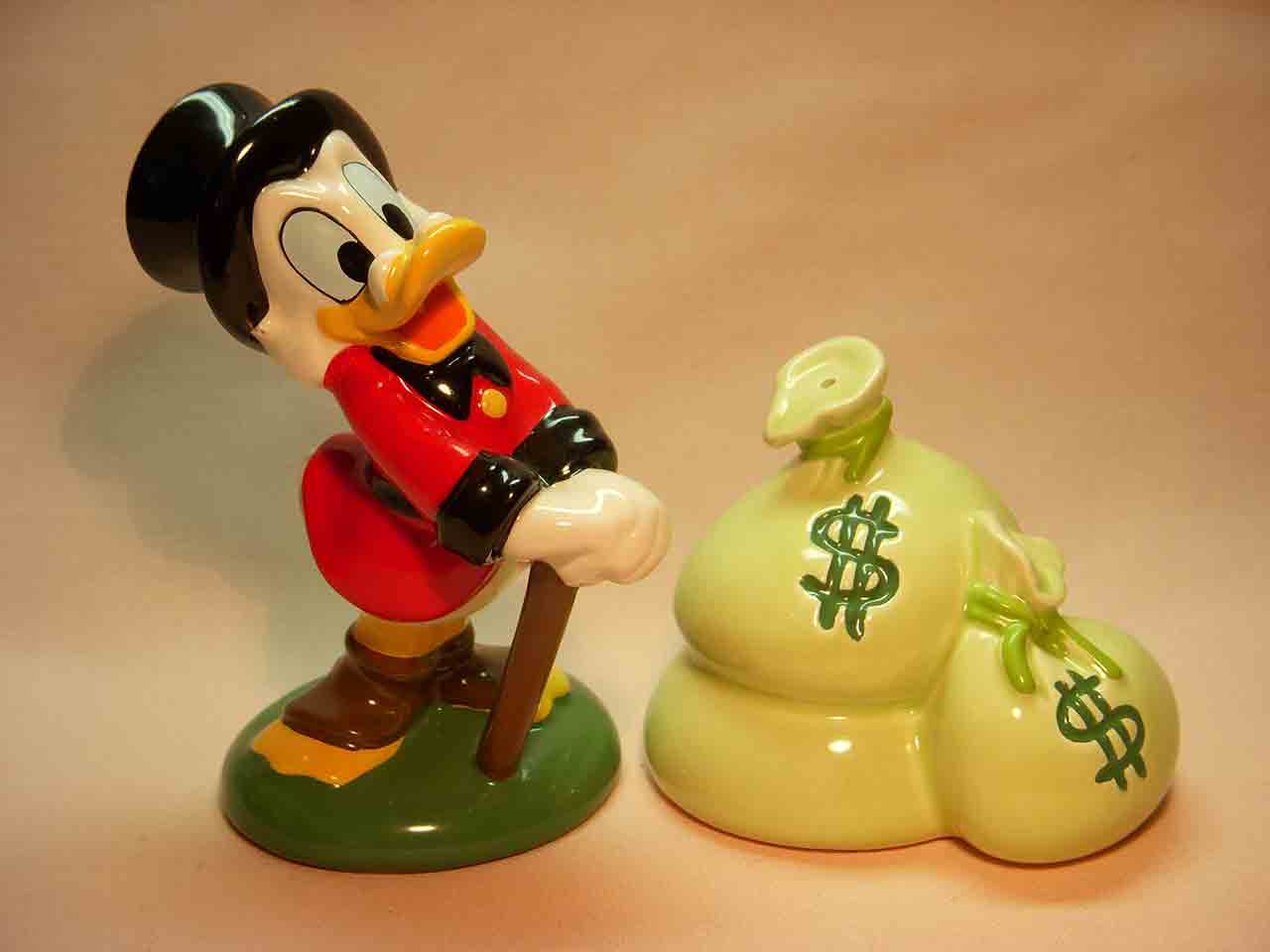
Selling a whole collection is much different from selling the sets individually. It’s less work, not as time consuming, plus you get rid of all of the tubs of shakers at one time to one person.
Buyers usually pay so much per set. Most buy collections to keep a few sets for themselves and sell the balance. They need to consider the number of sets, the collectability of the sets and the condition of the sets. They will expect a BIG discount because they are buying in bulk plus they are not just buying the great sets but also the more common sets, chipped or paint ware sets and sets they won’t be able to give away (woods, cylinders, some souvenir, etc.).
You don't have to list a price when you post an ad on the Club's Collections for Sale page. You can wait to see what offers you receive although be prepared to get an offer much lower than you might expect – especially if you are thinking even a low-ball price of $5-$8 per set.
- Per one member: For large collections selling as a whole, sellers need to realize that the collection is likely not worth the many $1000s of dollars you think it is. Large collections may have some highly sought after sets, but will also contain many very common sets that are not as collectible or of interest to most collectors. Depending on what’s in the collection, sellers should expect anywhere from 50¢ to $2.00 per set if selling the whole collection.
- A friend of mine told me last year at convention that she pays 50¢ to $1 per set when she buys collections.
- Last year we bought a small collection (about 450 sets) for $1.25 each. While there were some really nice sets most were common that I tried to sell for $3-$5 set. Still have some sets left. Lots of work to make a few dollars but I do it because I’m passionate about collecting shakers.
Sellers’ Suggestion: Don’t let someone come in and pay a higher price for some of the sets, aka “cherry picking”. You will be left with lots of sets you can’t sell.
How to Match Singles
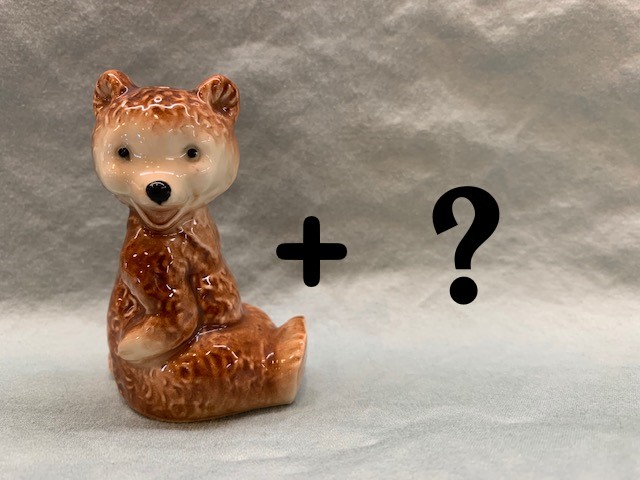
You have a single shaker but don’t know what goes with it. Or, you have a “pair” of shakers and not sure if it’s a “real” pair. How can you find out?
- Check the Club's gigantic Shaker Database to find your set.
- Ask a fellow Club member on the Club’s private Facebook page, Novelty Salt & Pepper Shakers Club Members’ Forum or ask on any of the various Facebook shaker collector group sites. There is even one just to match singles, Single S&P Shakers Buy Sell Trade.
- The Club’s annual Convention usually has lots of singles available for sale.
How to Pack Shakers for Shipping
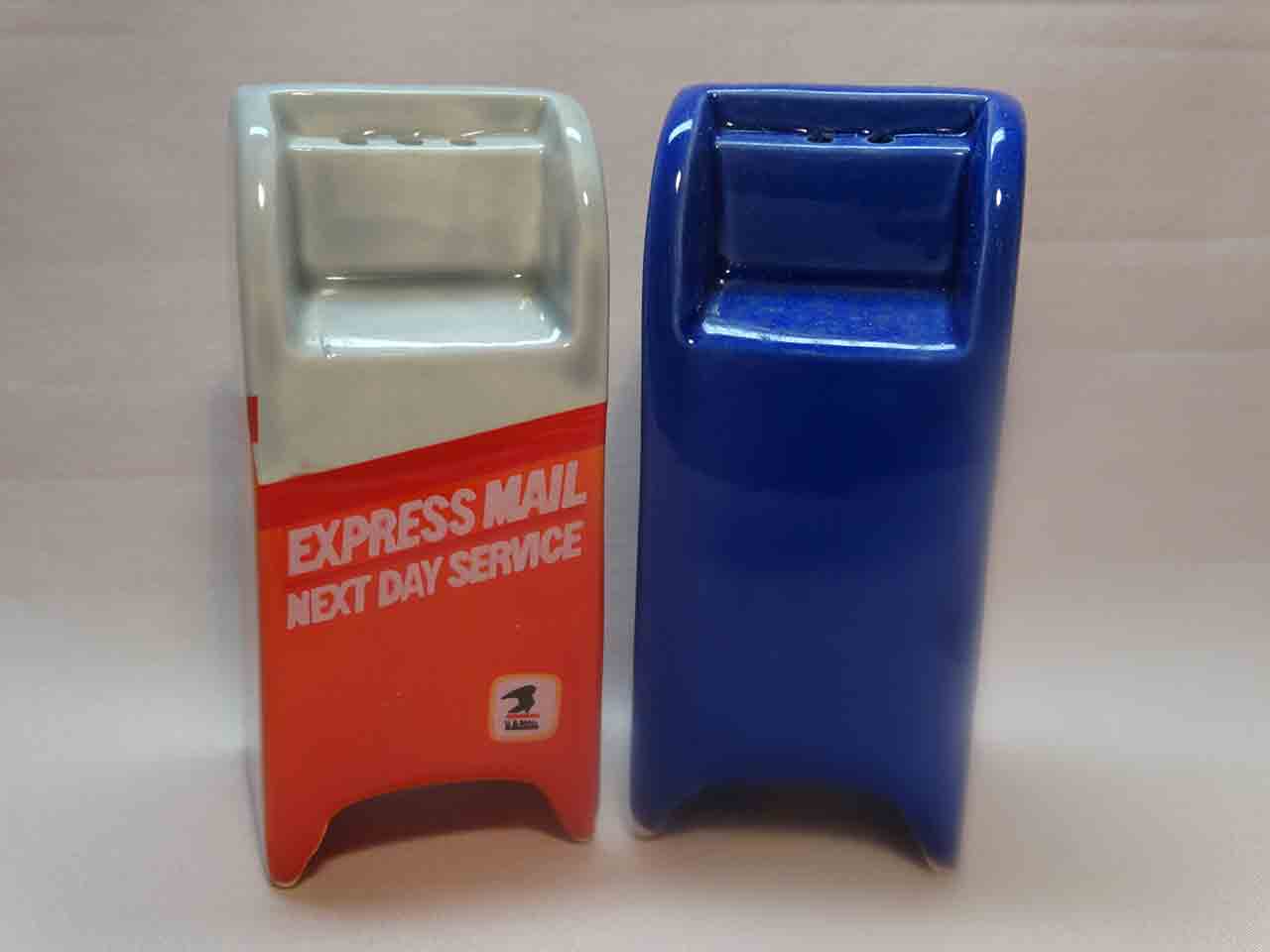
Shipping shakers is a critical part of shaker buying. No one wants to open a box with great anticipation only to find disappointment because their shaker arrived in pieces or chipped. To help the shakers arrive in pristine condition, try some of our members suggestions.
- Bubble wrap was the hands down favorite product used to ship shakers. One member added “fresh” bubble wrap. Another said bubble wrap and a little extra box in the big box.
- Wrap each piece separately in bubble wrap and secure with tape. If you put ceramic pieces together they will shift in the box, rub together and possibly chip/break while in transport. Add either “popcorn” or crumbled newspapers to a sturdy box.
- Don’t use tape on bubble wrap. I use shrink wrap to secure the bubble wrap around the shakers. Too much tape destroys the cushioning that the bubble wrap provides.
- If I use tape on bubble wrap it is masking tape or small piece of Scotch tape which removes easily. HATE it when people wrap that wide, clear tape multiple times around bubble wrap. It is extremely difficult to get open.
- Puppy pads.
- Packing depends on particular shakers. Double-box very delicate shakers. Always wrap each piece individually. Wrap extending parts with tissue or paper towel strips (i.e., tails, long ears, delicate legs, handles, hangers, etc.).
- I use paper filler but wrap the shakers in bubble wrap. If the shaker has protruding parts (arms, necks, delicate bunny ears or the like) I use either tissue or bubble wrap cut into strips to wrap the protruding part and fill any gaps between the part and the body of the shaker. Then I wrap it again in bubble wrap. I also do this for shakers I have in storage and have almost zero breakage.
- When sending a first class package containing a single shaker set under 13 ounces:
- Wrap delicate parts like wings, tails, legs, and arms with paper towel or bubble wrap strips.
- Wrap each ceramic item in bubble wrap. Wooden or plastic can be wrapped in plastic wrap or plastic bag.
- After bubble wrap, wrap in tissue paper then place each item into a plastic old fashion lunch bag with flap. Items are now ready for a box.
- Use a sturdy box slightly larger than the shakers and make sure that it doesn’t crush easily. I purchase boxes from Uline. They describe how much weight the box can hold; the more weight the box can hold, the studier it is.
- Line the bottom of box with foam peanuts then place shakers on top of peanuts.
- Line and cushion all around the shakers with foam peanuts so that the shakers are not directly touching any side wall and then put a layer of foam peanuts on top.
- Seal up the box with package tape at least twice around to seal box and then a layer of tape across the box so tape looks like a “t” around the box and gives extra support.
- I do NOT write anything like “fragile” or “handle with care” on the box as it may encourage the PO to test your wrapping skills.
- Now you’re ready to ship! If an expensive item, you can always add insurance. The package is now in the hands of the PO and you can only hope for the best.
Shaker Inventory Ideas

As our collections grow it’s helpful to have a method of tracking what shakers we have, what we know about them, and going forward, to avoid purchasing duplicates. The following information shared by members demonstrates the detail some go through to catalog their shaker inventory.
- I have a spreadsheet with a listing of all my shakers plus a photo file on my laptop with a picture of each pair. My spreadsheet has a description of each pair, a category (I made these up), as well as where and when I got them. I’ve made up two picture books with the photos of my shakers. I did these through Costco but I’m going to use Shutterfly for the next volumes.
- I take pictures and keep them in an album.
- I number each set, then write all the info on matching numbered index cards. I include who I got it from, when, where, etc. I have small numbered cases, 1-99, 100-199 and so on giving me easy access if needed. I’d also like to do a photo album.
- I keep photos of all of my shaker cases in my iPhone. The photos easily expand to view a close up of the shakers. That way when I’m out and about I always know what’s in my collection.
- I have different lists with different categories and I have a picture of every single set that is sorted into corresponding categories. Now I’m starting a database on my computer that holds my lists and pictures making it possible for me to take the info with me, for example, to Convention, so I can check if I “need” a pair that I see.
- I have a spreadsheet on my computer. Each shaker set is numbered with columns for date of purchase, description of shakers (including any flaws), where it was purchased, reference (book, page, i.e., CT4-24-2-1), category, and cost (this column has a total at the bottom of total cost of collection). Could add a column for location of set in your display. I have pictures of every set in numerical order of set, but have been unable to include the pictures in the spreadsheet because the files get too big; but it is easy to look up a picture with the shakers in numerical order.
- I take pictures of all sides and the bottom of all my shakers. I have categories and make folders for each shaker with name/description that allows me to find said set. I use notepad to write down all the pertinent information, such as measurements, importer labels, any issues, when, where and how much I paid for the set, etc. and save it in the shaker folders.
- I have index cards with all the shaker information, where I got it, when, who gave it to me, what I paid for it, what book it’s in, and what $$ does the book show. I never buy a duplicate pair. I have some photo albums too, and lots of shaker newspapers. Some photos are posted on the index cards.
- I use a data base program where I put any purchasing, manufacturer or other information I have about the set as well as pictures. For some sets I add additional information and pictures. For example, if a set depicts Orca whales, I try to add info about Orcas and pictures of the real thing. Not sure why I started doing that, other than pure interest, but it comes in handy at times.
- I take pictures of each one and put them on Pinterest. I also have a written album.
